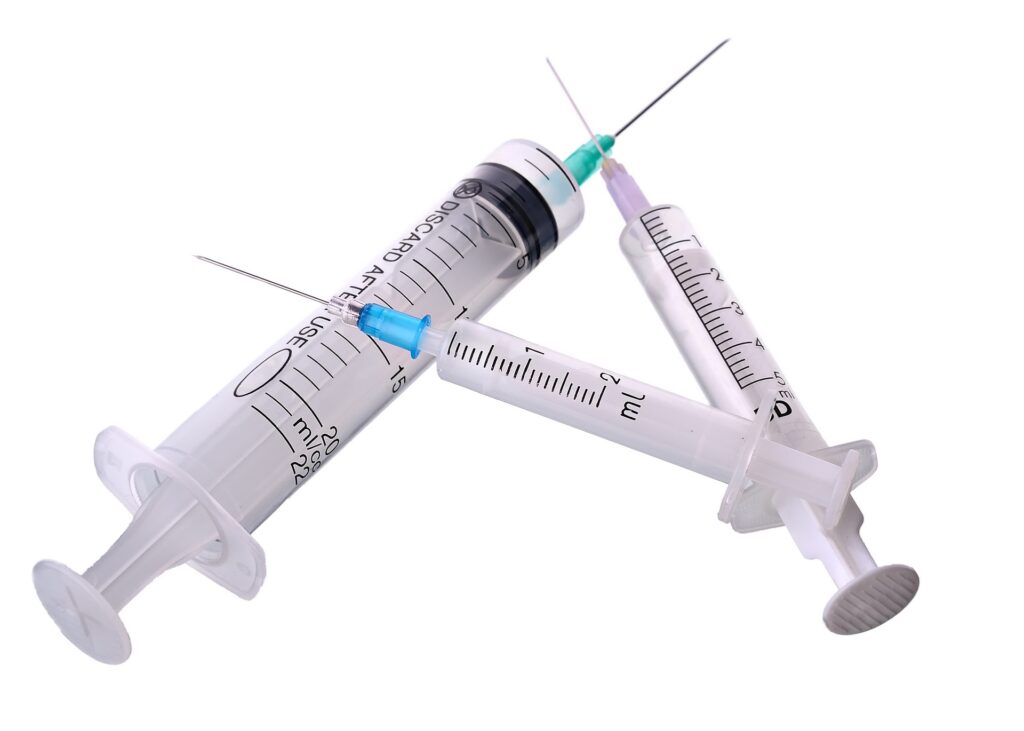Cortisone shots can be helpful in managing pain in a variety of different conditions.
Cortisone shots can help pain related to a torn rotator cuff but they will not ‘heal’ the cuff itself. Healing the cuff isn’t all that important as I’ve explained in other articles related to surgery and rotator cuff tears.
These injections come with some risks that you should be aware of, but they are generally pretty safe.
In the rest of this article, I’ll discuss:
- When you might consider getting an injection
- How often can you get injections, safely
- Are injections any better than rehab or surgery?
- What is a cortisone injection and how does it work
Let’s dive in!

When should you consider an injection for deep aching shoulder pain related to an RTC tear?
If you’ve already gone through physical therapy for a few months, nothing is making it better, and you still have high levels of pain, it might make sense to get an injection.
The reason for this is that if you need to make a decision about whether to stay with therapy, give it time, or go with a surgical procedure, you’ll want to be thinking clearly.
It’s very difficult to think clearly when you are in tremendous amounts of pain.
A cortisone injection can help to reduce this pain by quite a bit however I want to make sure you’re hearing me correctly; it may or may not work for you as these injections have a 50/50 chance of working with things like this.
How often can you get injections, safely?
According to the American Academy of Family Physicians, it is recommended that you receive no more than one corticosteroid injection every three months.
The risk of getting too many injections is cartilage damage and potentially vascular damage to the bone, resulting in avascular necrosis. This is most commonly seen in the hip and this is a real risk of intraarticular corticosteroid injections.
Much of the time physicians are not injecting directly into the joint anymore as this poses a higher risk.
Are Injections any better than rehab or surgery?
Injections are usually a temporary measure however I have worked with clients and I have family members who claim they got the injection and then the pain never came back.
That’s quite a remarkable outcome and this is the exception, not the rule.
Most people get an injection, it helps for a few months, maybe a year, and then symptoms do tend to come back, with one caveat, if you don’t work on a rehab program.
It’s my recommendation and most of my physician friends that if you receive an injection you should still go through a comprehensive rehabilitation program with physical therapy.
As I have shared in other articles related to surgery and RTC tears, it’s not all that great.
I highly recommend that if you have full range of motion and minimal strength loss that you consider physical therapy first, for at least 3 months before you go down the surgical route.
If it were me in that situation, I would go 6 months to a year of rehab before I considered a surgical procedure. The outcomes from surgery versus physical therapy after 5 years are the exact same when you compare against groups.
What is a cortisone injection and how does it work?
Cortisone is drug that is injectable and is in the class of substances known as a corticosteroid.
Corticosteroids are potent anti-inflammatory compounds that occur naturally within the body as described by the NHS:
“Steroids are a manmade version of hormones normally produced by the adrenal glands, 2 small glands found above the kidneys.” – NHS, UK
https://www.nhs.uk/conditions/steroid-injections/
Prior to injecting the corticosteroid, the doctor may use a local anesthetic to numb the area.
Also, please note that if you are diabetic make sure to let your doctor know this as corticosteroids can spike your blood glucose levels quite dramatically.
And one more thing; if you want to heal your rotator cuff naturally, you’ll want to read on with this article I’ve linked to.
Key Takeaways
- Injections usually should not be done before trying physical therapy for a few months unless the pain is so intolerable that you cannot function
- Cortisone injections should not be used more than once every 3 months into a single joint.
- Cortisone will not ‘heal’ your torn rotator cuff but it may help with the pain temporarily
- Cortisone is a better option than surgery however if you receive a cortisone injection your physician will likely recommend you also go through a course of physical therapy
- Make sure to give physical therapy at least 3-6 months before you try other options. (not all of this will need to be with the PT, you can do your exercises at home, too.)

